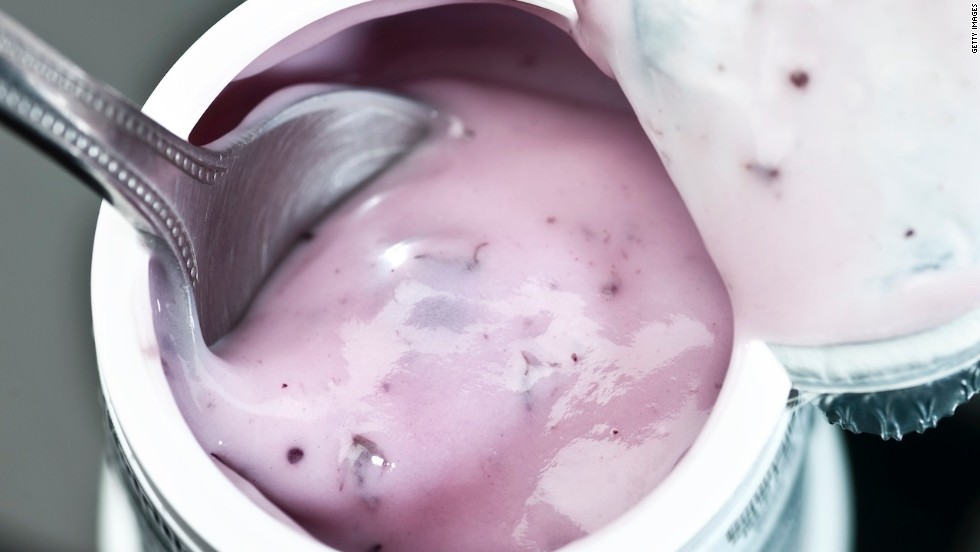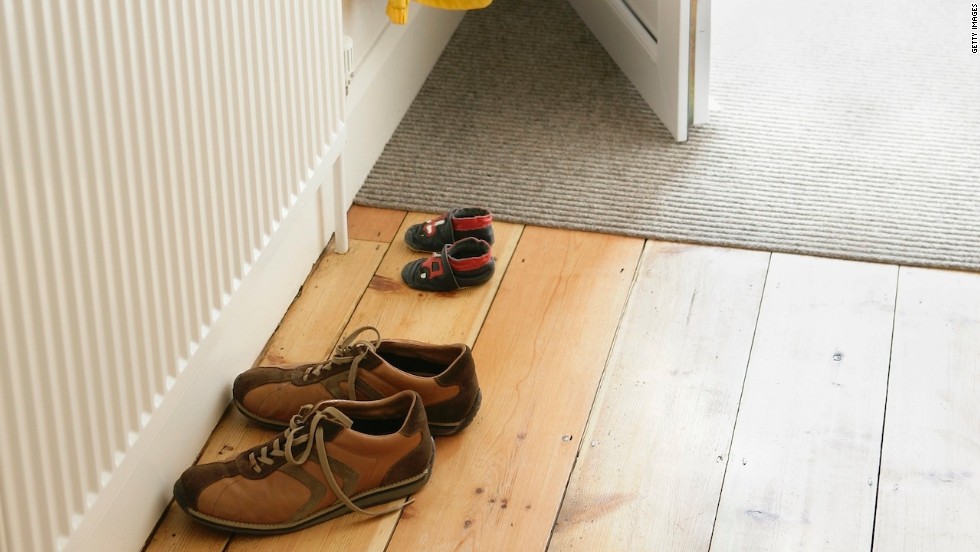Story highlights
- Cleaning everything in your home, including your washing machine, can help to manage allergies
- Don't skip your workout because of pollen, just plan it for the right time of day
Between spring-cleaning and all that pesky pollen in the air, this is an especially itchy-sniffly-sneezy time of year. Run through this list to prepare yourself for the many irritants that can make you miserable.
Cleaning your washing machine could help
The warm, dark interior of your machine is the perfect breeding ground for fungi, not to mention bacteria like E. coli, and detergent doesn't do much to deter them. "I tell my patients to wipe down the machine's drum, and particularly the door and rubber gasket, with diluted bleach or bleach wipes twice a month, or to use a cleaning tablet, like Affresh," says allergist Neeta Ogden, MD. Other habits that can prevent mold growth: Remove wet clothes from the machine promptly, and leave the door open between loads so the drum and door can dry.
Some allergies can be prevented with immunotherapy pills
Two years ago, the FDA approved the first sublingual pills for grass and ragweed allergies. (A pill for dust allergy may be coming soon.) But before you open up and say aah, consider this: If you're allergic to, for example, mold or oak in addition to grass or ragweed, the pills may not be right for you. "They're really for someone who's sensitized to just one allergenŌĆöand a lot of people aren't," explains Beth Corn, MD, associate professor of clinical immunology at the Icahn School of Medicine at Mount Sinai in New York City. On the other hand, she adds, "allergy shots can address multiple allergens at once."
Don't use your feather duster
You should dust every week, but using a feather duster or dry rag is worse than not dusting at all. "It stirs more dust into the air than it traps," explains Dr. Corn. "A wet cloth or even a wet paper towel is better because it actually picks up the dust"ŌĆöwhich is vital for anyone suffering from allergies or asthma, not just those sensitive to dust mites. That's because household dust is full of lots of other irritating stuff, including pet dander, mold spores, and fabric fibers. When it comes time for the chore, wear a face mask and gloves, or just wash your hands thoroughly after you've finished.
Do use a pillow cover
Dust mites are one of the most common causes of year-round allergies, and given their favorite foodŌĆöskin cells shed by humans and petsŌĆöit's no surprise that they thrive in beds. (Blech!) To fight back, allergists advise getting allergenproof encasings for pillows, as well as for comforters, mattresses, and box springs. A 2002 study showed that these covers can significantly reduce dust mites. (Experts recommend ones made from very tightly woven microfiber.) "The case eliminates the need to wash the pillow itself," which can lead to mold growth, says Jeffrey May, a certified indoor air-quality professional and author of My House Is Killing Me! ($20; amazon.com). And you won't have to replace your pillow every year; sleep on it until it's no longer comfy.
Exercise at the right time
While different types of pollen peak at different times of day, morning is almost universally miserableŌĆöso the allergy-prone should postpone sweat sessions until the later hours. Before you lace up, check the pollen count at aaaai.org, the site of the American Academy of Allergy, Asthma & Immunology. "If it's a high pollen day, you're better off doing your workout indoors, no matter what time it is," says Dr. Ogden. Forget blustery days: Wind raises the concentration of allergens in the air. In an ideal scenario, you'd head out just after showers have passed through, because rain washes pollen away.
You may be more likely to get migraines
People with allergy symptoms are 30% more likely to get migrainesŌĆöand their headaches may be more frequent and intense than those experienced by migraine sufferers without the sniffles. Experts aren't sure exactly why, though the connection may have to do with the main sensory nerve in the face, the trigeminal nerve. But there is hope: Research suggests that allergy shots can reduce the frequency and intensity of migraines by 50%.
Buy the right vacuum
You already know that a HEPA (high-efficiency particulate arrestance) filter is nonnegotiable because it sucks up and traps the teeniest particles that have settled into your rugs, floors, and furniture. "But even with a HEPA, it's a mistake to go bagless," says May. "When you empty the contents of the canister, you inhale dust." Not ready to ditch your bagless machine? Empty the canister outside. Like feather dusting, this is a task where a face mask and gloves (or a spouse or roommate willing to do it for you) can come in handy.
No matter what kind of vacuum you use, scrubbing it down should be on your spring-cleaning list. Use a damp cloth to wipe the canister, and remove any visible debris from the brushes and filter. Keep an eye out for cracks or air gaps around the filter, which are signs it needs to be repaired or replaced.
Clean everything in your home
Experts say that you should wash curtains, throw pillows, area rugs, and shower curtains at least once a month. We know, we know: So. Much. Laundry. But hot water is the best way to remove allergens that would otherwise turn you into a runny-nosed mess. Researchers in South Korea determined that 140 degrees is the ideal temp for a wash, killing off 100% of dust mites; water that was 104 degrees destroyed just 9.6% of the microscopic buggers. The hotter water was also better at removing pollen. The sanitize setting, or whatever is hottest on your machine, is typically toasty enough. If you want to cut back on trips to the laundry room, consider swapping curtains for blinds (that you dust regularly) and ditching the area rugs.
RELATED: 5 Home Remedies for Allergies That Actually Work
Choose the right houseplant
Researchers in Belgium found that 78% of allergy sufferers with plants at home were allergic to at least one, most frequently ficus. But fake plants aren't the only alternative. Many flowering kinds, like hibiscus, produce little to no airborne pollen, so they shouldn't set off symptoms. And NASA research has suggested that some houseplants, like the corn plant (aka mass cane), may scub air of contaminants such as formaldehydeŌĆö"an irritant that can make you more sensitive to allergens," says Dr. Ogden. Plants may even remove particles from the air: One study showed that in a small office, they reduced dust by up to 20%!
Spring-clean your closet
"You would not believe the number of allergens I find in closets," says May, who has taken air and dust samples from hundreds of them. One common culprit: hampers. Every time you toss in a dirty shirt or pair of socks, you could spread pollen and dander to your clean clothes. Then there's the dust that collects beneath the shoe racks and behind storage bings. May advises emptying the closet at least once a year and giving it a thorough cleaning. As you put stuff back, leave space in front of any wall between the inside and outside of the house. "When it's cold outside and humid in the house, water condenses along the walls, and you can get mold," he explains. Springtime (and rising temps) can mean more humidity indoors, which is great news for dust mites and terrible news for your nose. Check that closet vents are open so conditioned air and heat can circulate.
No pets are hypoallergenic
There's really no such thing as a completely hypoallergenic animal, since different people react to different things, says Dr. Ogden, who is also a spokesperson for the American College of Allergy, Asthma & Immunology. For example, someone allergic to mold might be bothered by a fish tank, which can harbor fungal spores. And people who struggle with dander will likely have trouble with any dog or cat: "The allergic reaction is triggered by proteins in the animal's saliva and skin, regardless of how much hair it has," explains Dr. Ogden. (Indeed, a study in the American Journal of Rhinology & Allergy found essentially the same amount of dander in homes with "hypoallergenic" dogs as in homes with other breeds.) Not even birds are safe for the dander-sensitive, because they produce feather dust, known as bird dander. But if pollen is your problem and you're desperate for a dog, go with a short-haired breed. When your pup is outside, fewer grains will get trapped in his coat and tracked inside.
This article originally appeared on Health.com.

























